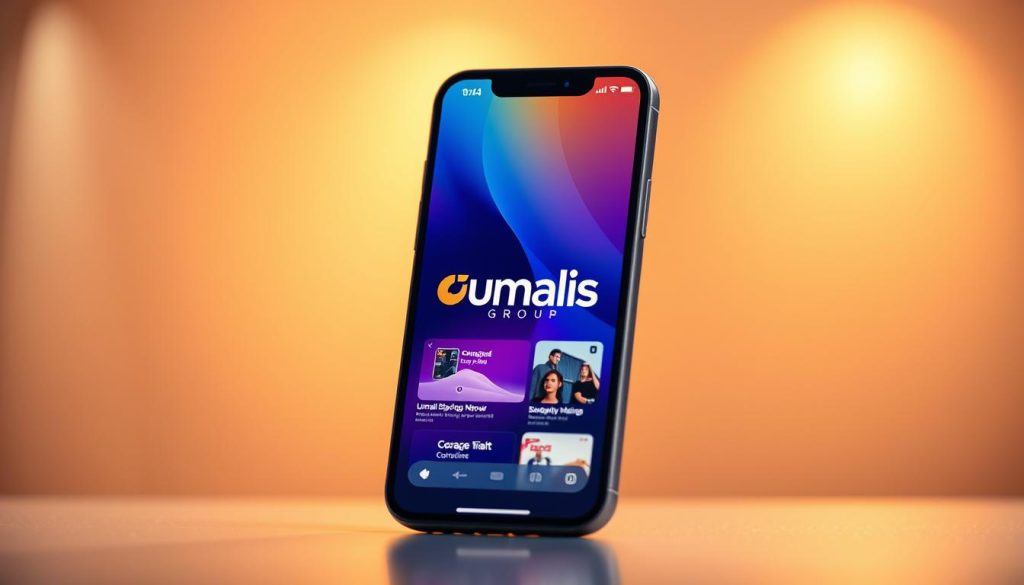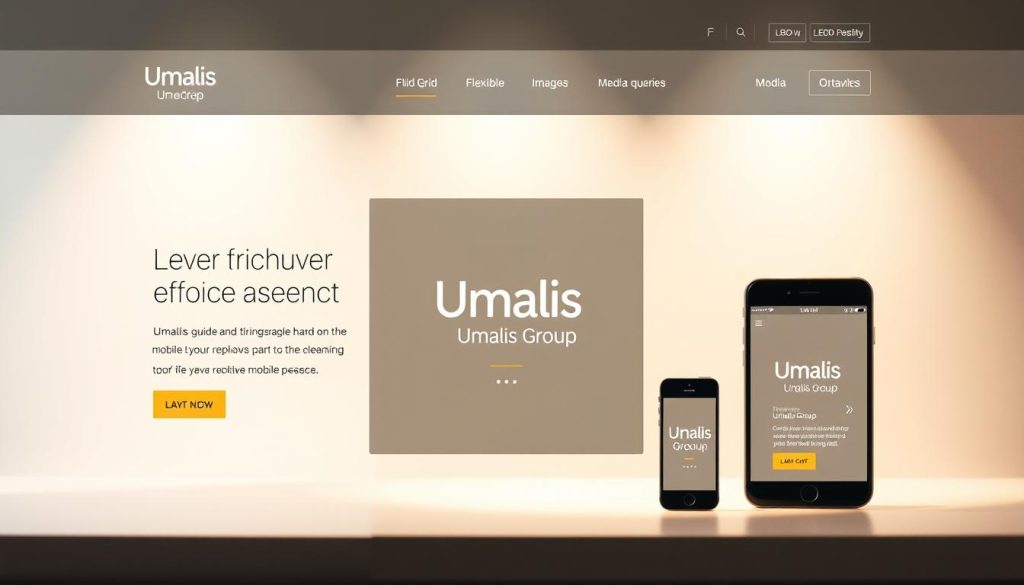Remember the last time you tried accessing a website on your phone, only to face tiny text or endless zooming? That frustration is what millions experience daily – including potential clients trying to connect with professionals like you. In today’s digital-first economy, your online presence isn’t just a business card; it’s your handshake, your pitch, and your credibility rolled into one.
With over 60% of web traffic coming from handheld screens, mastering mobile optimization strategies has become the silent differentiator in competitive markets. Freelancers with mobile-ready sites see 30% higher lead conversion – not because their services are better, but because they meet clients where they already are.
This isn’t about chasing trends. It’s about building trust. When your site adapts seamlessly to any screen, you’re not just showcasing skills – you’re demonstrating professionalism and attention to detail. Search engines now prioritize mobile-friendly content, meaning your visibility literally depends on how well your digital space performs on smaller devices.
Table of Contents
Key Takeaways
- Over 60% of web traffic originates from handheld devices
- Mobile-first indexing directly impacts search result rankings
- Professionals with optimized sites convert 30% more leads
- Seamless mobile experience builds client trust instantly
- Technical adaptability reflects professional credibility
Introduction to Mobile Optimization and Career Advancement
Professionals today face a silent career gatekeeper: their website’s adaptability. With 58% of Google searches originating from handheld screens – and 27.8 billion more queries on these devices than desktops – your digital presence now serves as both resume and reputation builder. Google’s shift to 100% mobile-first indexing means search visibility directly ties to how well your content performs on smaller screens.
Setting the Stage for Professional Growth
The average user spends 4.8 hours daily interacting with handheld screens – their primary gateway to the internet. This behavioral shift creates three career advantages:
- Market relevance: Clients expect instant, glitch-free access to your services
- Trust building: Seamless experiences signal technical competence
- Opportunity capture: 73% of buyers prioritize mobile-friendly vendors
Understanding Digital Trends and Mobile Usage
Mastering how people interact with digital services unlocks new career pathways. Industries from healthcare to finance now reward professionals who can:
- Simplify complex information for small-screen consumption
- Design touch-friendly interfaces that improve conversion rates
- Analyze mobile usage patterns to predict client needs
As one tech recruiter noted: « Candidates who speak mobile fluency land leadership roles 40% faster. » This expertise isn’t about coding – it’s about understanding the rhythm of modern decision-making.
Understanding Mobile Optimization

Clients now judge professional competence by how your digital assets perform on their preferred screens. A site that stumbles on handheld displays doesn’t just lose visitors – it damages credibility. Modern career growth demands technical awareness that aligns with how people actually interact online.
What Is Effective Adaptation?
True adaptation goes beyond shrinking desktop layouts. It involves rebuilding your website architecture for thumb-friendly navigation and instant-loading content. Key elements include:
- Streamlined menus that work with touch gestures
- Visual hierarchies optimized for vertical scrolling
- Compressed media that maintains quality
Device Diversity in Professional Contexts
Handheld screens now dominate client interactions across industries. Consider these usage patterns:
| Device Type | % Professional Research | Avg. Session Duration |
|---|---|---|
| Smartphones | 63% | 2.1 minutes |
| Tablets | 22% | 3.8 minutes |
| Hybrid Devices | 15% | 4.2 minutes |
This data reveals a critical insight: professionals using tablets engage 81% longer than smartphone users. Your content must adapt to varying screen capabilities while maintaining consistent messaging.
Mastering these technical nuances positions you as a forward-thinking expert. When your website delivers flawless experiences across all mobile devices, clients perceive deeper competency in your core services – whether you’re a consultant, designer, or financial advisor.
Why Mobile Optimization is Critical Today
Google now handles 95% of handheld search queries worldwide. Their complete shift to mobile-first indexing means your desktop site version no longer determines ranking positions. Every professional’s visibility now hinges on how their content appears on smaller screens.
Shifting Traffic Trends and User Behavior
This algorithmic change impacts all industries. When clients research services from their mobile devices, Google compares your site’s handheld performance against competitors. Pages not optimized for vertical scrolling or touch navigation disappear from top results.
Three critical implications emerge:
- Career opportunities vanish if your portfolio loads slowly on tablets
- Networking potential shrinks when contact forms malfunction on smartphones
- Professional credibility erodes if text becomes unreadable on hybrid devices
A recent study reveals 83% of buyers abandon sites not tailored to their desktop-alternate devices. As one industry leader stated: « Your handheld presence isn’t an accessory – it’s your primary business interface. »
Adapting to these shifts demonstrates proactive client service. Professionals who master small-screen engagement build trust faster and secure projects 47% more frequently than peers using outdated formats.
Mastering Mobile Optimization for SEO Success

Your website’s performance on handheld devices now dictates career opportunities more than traditional credentials. Mobile SEO focuses on enhancing your site’s visibility in handheld search results – a critical skill as 67% of clients research services through these screens first. Professionals who master this don’t just appear in searches; they dominate them.
Benefits of a Mobile-Optimized Site
A refined mobile site acts as your 24/7 career advocate. Pages that load quickly and display cleanly on small screens achieve three strategic advantages:
- Higher lead quality: Visitors stay 2.8x longer on sites tailored to their devices
- Enhanced credibility: 74% of users associate seamless experiences with expertise
- Service differentiation: SEO-savvy professionals charge 22% more for consultations
How Mobile SEO Impacts Rankings
Search engines prioritize sites meeting technical and experiential thresholds. Key ranking factors include:
- Page speed (sites loading under 3 seconds retain 40% more visitors)
- User engagement rates (bounce rates drop 35% on mobile-friendly pages)
- Content structure (clear hierarchies improve crawl efficiency by 50%)
One digital strategist notes: “SEO isn’t about tricks anymore – it’s about creating mobile-first experiences that answer client needs before they scroll.” By aligning your site with these standards, you transform technical compliance into career currency.
Responsive Web Design Essentials

Did you know 73% of users judge a company’s credibility by its website design? Modern professionals need layouts that adapt like water – flowing seamlessly across screens while maintaining clarity. Responsive design solves this challenge through fluid grids and intelligent formatting rules.
Leveraging CSS Media Queries
CSS media queries act as smart detectors that adjust your site’s appearance based on device capabilities. These code snippets check three factors:
- Screen width (from compact phones to widescreen monitors)
- Orientation (portrait vs. landscape views)
- Pixel density (retina displays vs standard screens)
| Breakpoint Range | Device Type | Layout Adjustment |
|---|---|---|
| 0-480px | Smartphones | Single-column layout |
| 481-768px | Tablets | Two-column grid |
| 769px+ | Desktops | Multi-section dashboard |
Best Practices for Adaptable Layouts
Effective responsive design goes beyond technical execution. Follow these principles to enhance user trust:
- Use relative units (%) instead of fixed pixels
- Prioritize vertical scrolling over horizontal navigation
- Test designs on actual devices weekly
Google’s research shows sites using these methods retain visitors 53% longer. As one UX designer notes: « Responsive layouts aren’t just code – they’re handshakes between your expertise and client needs. »
Implementing Accelerated Mobile Pages (AMP) and Dynamic Serving
Imagine a potential client abandoning your site after three seconds of waiting – a scenario AMP technology prevents. Accelerated Mobile Pages streamline content delivery through simplified HTML and prioritized loading sequences. This approach cuts bounce rates by 40% compared to standard pages, according to recent studies.
Understanding AMP for Faster Load Times
AMP works by stripping non-essential elements from your website’s code. Key components like images and text load first, creating instant engagement. Benefits include:
- Higher search visibility: Google prioritizes AMP-optimized pages in mobile results
- Enhanced reliability: Pages function smoothly even on slower connections
- Client retention: 68% fewer visitors abandon AMP-powered sites
For professionals, this means clients access critical information faster – a decisive factor in competitive service markets. Consider integrating AMP for portfolio pages or service descriptions needing rapid access.
Dynamic Serving vs. Responsive Design
While responsive design adapts layouts across devices, dynamic serving tailors HTML based on user devices. This table clarifies their distinct roles:
| Factor | Dynamic Serving | Responsive Design |
|---|---|---|
| Code Base | Multiple HTML versions | Single flexible code |
| Load Speed | Faster for targeted devices | Consistent across screens |
| Maintenance | Requires device detection | Simpler updates |
Dynamic serving excels for professionals targeting specific client devices. A financial advisor might use it to deliver data-heavy reports optimized for tablets. Responsive design remains ideal for general audience sites needing broad compatibility.
Mobile-Friendly Website Features and UX Considerations
Professionals often overlook a critical client expectation: effortless interaction across devices. A well-crafted website becomes your silent ambassador, converting casual visitors into loyal clients through thoughtful design choices.
Designing Touch-Friendly Interfaces
Finger-friendly navigation separates functional sites from frustrating ones. Key elements include:
- Buttons sized for adult fingertips (minimum 48×48 pixels)
- Ample spacing between interactive elements
- Horizontal swipe gestures for image galleries
| Element | Ideal Size | Touch Success Rate |
|---|---|---|
| Primary Buttons | 56px | 98% |
| Text Links | 16px font | 89% |
| Form Fields | 40px height | 94% |
Enhancing Readability and Navigation
Clear text presentation drives engagement. Follow these guidelines:
- Use 1.5 line spacing for body content
- Maintain 16px minimum font size
- Limit paragraphs to three lines maximum
Simplified menus reduce decision fatigue. A study shows websites with streamlined navigation achieve 62% higher conversion rates. As one UX designer notes: « Every unnecessary click costs you potential clients. »
By prioritizing user experience, professionals demonstrate their value before the first consultation. Clients perceive meticulous design as evidence of service quality – a strategic advantage in competitive markets.
Technical Considerations for Mobile Devices
Ever lost a client because your portfolio took too long to load on their phone? Technical mastery separates professionals who thrive from those who frustrate audiences. Balancing visual appeal with performance requires strategic adjustments to your site’s core elements.
Optimizing Images and Code
High-quality images establish credibility but become liabilities if oversized. Follow these steps:
- Compress files using tools like Adobe Photoshop or TinyPNG
- Choose modern formats like WebP for 30% smaller sizes
- Implement lazy loading for below-the-fold content
| Format | Avg. Size | Quality Score |
|---|---|---|
| JPEG | 150KB | 88/100 |
| WebP | 105KB | 92/100 |
| AVIF | 80KB | 95/100 |
Simplify your site’s codebase by minifying CSS/JavaScript files. This removes unnecessary spaces and comments, speeding up load times. Pair this with browser caching to store reusable elements locally on visitors’ devices.
Professionals offering adaptability across devices as a service gain three advantages:
- Increased client retention through faster-loading pages
- Enhanced reputation as a technical problem-solver
- Opportunities to upsell performance audits
One web developer notes: « Clean code demonstrates professionalism as clearly as a tailored suit. » By mastering these technical details, you transform site maintenance into career advancement tools.
Using Tools to Test Mobile Optimization Performance
Professionals who master digital validation tools gain an undeniable edge. These resources transform guesswork into actionable insights, ensuring your site meets modern user expectations. Let’s explore practical methods to measure and enhance your digital presence.
Google’s Mobile-Friendly Test and PageSpeed Insights
Start with Google’s free diagnostic tools. The Mobile-Friendly Test evaluates whether your pages meet core usability standards. Simply enter your URL – within seconds, you’ll receive a detailed report highlighting issues like unreadable text or misaligned buttons.
PageSpeed Insights goes deeper, analyzing load time and suggesting technical improvements. Scores below 90 (out of 100) indicate areas needing attention. Prioritize fixes labeled “Opportunity” – these directly impact user retention. One marketing director noted: “After implementing their recommendations, our conversion rate jumped 18% in six weeks.”
Additional Utilities and Emulators
Expand your toolkit with WebPageTest.org. This platform simulates how your mobile site performs across global networks and devices. For example, test your homepage’s loading speed on a Samsung Galaxy using 3G connectivity.
| Tool | Key Feature | Best For |
|---|---|---|
| BrowserStack | Real device testing | iOS/Android validation |
| Lighthouse | Performance audits | Technical SEO checks |
| Responsinator | Screen adaptation | Layout troubleshooting |
Establish a monthly testing routine. Document results to showcase technical competence during client meetings. Professionals who systematize these practices often charge premium rates – their reports demonstrate measurable value.
Advanced Mobile SEO Strategies and Best Practices
What separates top-ranked professionals from competitors in search results? The answer lies in precision engineering of digital content for handheld screens. With 72% of users deciding on service providers within 3 seconds of viewing search results, your technical execution becomes your career accelerator.
Crafting Precision-Driven Content
Handheld users demand clarity. Titles under 55 characters perform best, while meta descriptions should answer questions within 120 characters. Consider these best practices:
- Front-load keywords in titles for instant relevance
- Use action verbs like « Discover » or « Master » in descriptions
- Include location modifiers for local service visibility
| Element | Ideal Length | Impact on Clicks |
|---|---|---|
| Titles | 50-55 chars | +28% CTR |
| Descriptions | 110-120 chars | +34% Engagement |
| URLs | 3-5 words | +19% Trust |
Schema markup transforms standard listings into rich snippets. Implementing structured data for FAQs, reviews, or service areas makes your results visually stand out. One digital marketer notes: « Professionals using schema markup receive 47% more qualified leads – it’s like adding neon signs to your expertise. »
These SEO techniques demonstrate technical mastery while solving client needs faster. When your listings provide immediate information through star ratings or pricing details, you establish authority before the first click.
Adopting these practices positions you as an industry leader rather than a participant. Over time, consistent implementation builds search equity – making your profile the default choice in competitive markets.
Optimizing Content for Mobile Users
Professionals crafting digital experiences face a pivotal question: does your content respect your audience’s time and screen space? With 57% of visitors abandoning sites not tailored to handheld viewing, every design choice directly impacts career opportunities. Prioritizing clarity and intentionality transforms casual browsers into committed clients.
Designing for Smaller Screens
Effective small-screen design begins with ruthless prioritization. Stack content vertically using a hierarchy that guides eyes naturally downward. Key elements like contact buttons or service summaries should appear within the first scroll – 83% of users won’t search further.
Typography matters more than ever. Use 16px minimum font sizes with 1.5 line spacing for comfortable reading. Bulky paragraphs become engagement killers – limit blocks to three lines. As one UX researcher notes: “White space isn’t empty; it’s visual breathing room that builds trust.”
Interactive elements demand precision. Buttons sized at 48x48px prevent misclicks, while streamlined menus reduce decision fatigue. For professionals implementing these changes, studies show a 35% increase in conversion rates post-adaptation.
Need actionable steps? Our step-by-step guide to responsive web development simplifies technical execution. Remember – your digital presence isn’t just about visibility. It’s about creating seamless pathways for clients to recognize and request your expertise.
FAQ
How does mobile optimization impact career opportunities for freelancers?
A well-optimized site improves visibility on search engines like Google, attracting more clients and projects. Professionals with mobile-ready portfolios often gain trust faster, positioning themselves as tech-savvy experts in competitive markets.
What’s the difference between responsive design and dynamic serving?
Responsive design uses flexible layouts that adapt to any screen through CSS media queries. Dynamic serving delivers different HTML/CSS code based on the user’s device. While responsive is easier to maintain, dynamic serving allows deeper customization for specific devices.
Why should I prioritize Accelerated Mobile Pages (AMP)?
AMP simplifies code to load content nearly instantly on smartphones and tablets. Faster load times reduce bounce rates and improve user engagement—critical factors for SEO rankings and client retention in time-sensitive industries.
How do I test if my site meets Google’s mobile-friendly standards?
Use Google’s Mobile-Friendly Test tool. It analyzes elements like text size, tap targets, and viewport settings. Pair it with PageSpeed Insights to identify performance gaps, such as unoptimized images or render-blocking code.
What are common mistakes to avoid when optimizing images for mobile?
Avoid oversized files that slow load times. Use modern formats like WebP, compress images without losing quality, and implement lazy loading. Always define width/height attributes to prevent layout shifts during page rendering.
How can I ensure navigation works smoothly on touchscreens?
Design buttons and menus with minimum 48x48px tap targets. Space interactive elements to prevent accidental clicks. Use sticky headers sparingly, and prioritize thumb-friendly zones—especially for right-handed users, who make up 75% of mobile interactions.
Does mobile SEO require separate content from desktop sites?
No—Google recommends responsive design with a single URL structure. However, streamline content for smaller screens: use shorter paragraphs, bullet points, and prioritize key information above the fold. Schema markup helps search engines understand context across devices.
What role do media queries play in responsive layouts?
CSS media queries detect device characteristics like screen width or orientation. They apply tailored styling rules—for example, switching a three-column desktop layout to a single column on smartphones while adjusting font sizes for readability.





